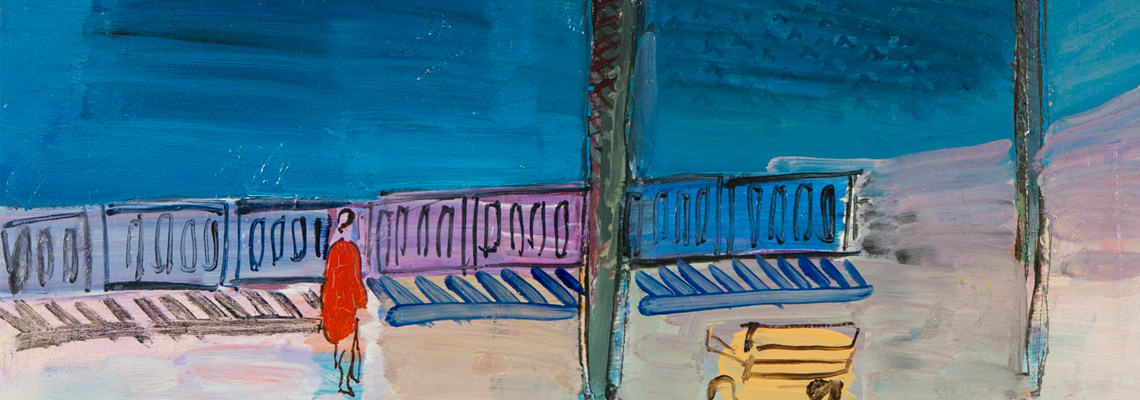Raoul Dufy is a name synonymous with the power of color in art. For over 20 years, I have been studying and writing about this renowned artist and his impact on the world of art. In this article, we will delve into the early life and career of Raoul Dufy, his association with the Fauvism movement, and the influence of color on his artistic style. We will also explore Dufy's groundbreaking work in the decorative arts and the lasting legacy of his use of color. So join me on this journey as we explore the life and Raoul Dufy's paintings, a true master of color.
Early Life and Career
Raoul Dufy was born in 1877 in Le Havre, France. He initially received formal training in ceramics, but eventually turned his focus to painting. Dufy's early work was strongly influenced by Impressionist and Post-Impressionist styles, but it was his association with the Fauvist movement in the early 20th century that brought him considerable recognition. It was during this period that Dufy's use of color truly began to blossom, with the vibrant hues he employed becoming a hallmark of his work. He continued to develop his style throughout his career, eventually exploring the world of decorative arts and experimenting with different techniques and mediums. Dufy's use of color has had a lasting impact on the art world and remains an important part of his legacy.
- Raoul Dufy was born in Le Havre, France
- He studied at the École des Beaux-Arts in Paris and began his career as a textile designer
- He exhibited his work alongside Matisse and Derain, marking the beginning of his artistic career
Association with Fauvism
Dufy is often associated with the Fauvist movement, which emerged in France in the early 20th century. Fauvism was characterized by its use of bright, bold colors and its rejection of traditional techniques and subject matter. Dufy's work reflected the Fauvist ideals of color and form, and his use of vibrant hues became a hallmark of his artistic style.
- Dufy is associated with the Fauvist movement
- Fauvism was characterized by its use of bold colors and rejection of traditional techniques and subject matter
- Dufy's use of vibrant hues became a hallmark of his style
The Influence of Color on Dufy's Artistic Style
Color played a significant role in Dufy's artistic style. He believed that color had the power to convey emotion, and he used it to create dynamic and expressive works of art. Rather than portraying the world in a realistic manner, Dufy used color to express his own feelings and impressions of the world around him. His use of rich, luminous tones created a sense of movement and energy in his paintings, which often depicted scenes of leisure and relaxation.
- Color played a significant role in Dufy's artistic style
- He believed that color had the power to convey emotion
- Dufy used color to express his own feelings and impressions of the world
- His use of rich, luminous tones created a sense of movement and energy in his paintings
- Dufy often depicted scenes of leisure and relaxation
Dufy's Development of the Decorative Arts
In addition to his work as a painter, Dufy was also a prolific designer of decorative arts. He created patterns for fabrics, carpets, and wallpaper, and his designs were often inspired by nature and the world around him. Dufy saw these decorative arts as a way to bring color and beauty into everyday life, making art accessible to a wider audience. In doing so, he helped to bridge the gap between the worlds of high art and popular culture.
- Dufy was a prolific designer of decorative arts
- His designs were often inspired by nature and the world around him
- Dufy saw these decorative arts as a way to make art accessible to a wider audience
- He helped to bridge the gap between the worlds of high art and popular culture
Legacy and Impact of Dufy's Use of Color
Dufy's use of color continues to influence artists and designers today. His bold, expressive style has inspired generations of artists, and his designs for decorative arts continue to be produced and admired. Dufy's legacy can be seen in the work of contemporary artists such as David Hockney and Anish Kapoor, who continue to push the boundaries of color and form in their own work.
- Dufy's use of color continues to influence artists and designers today
- His bold, expressive style has inspired generations of artists
- Dufy's designs for decorative arts continue to be produced and admired
- His legacy can be seen in the work of contemporary artists such as David Hockney and Anish Kapoor
